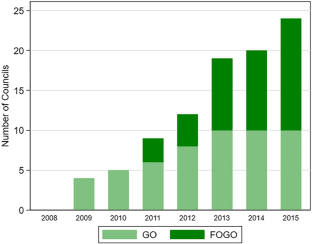2024-03-26 カリフォルニア工科大学(Caltech)
<関連情報>
- https://www.caltech.edu/about/news/sleeping-supermassive-black-holes-awakened-briefly-by-shredded-stars
- https://iopscience.iop.org/article/10.3847/1538-4357/ad0c56
- https://iopscience.iop.org/article/10.3847/1538-4357/ad0cc2
- https://iopscience.iop.org/article/10.3847/1538-4357/ad0c55
コンパクトな対称天体。I.包括的な真正カタログに向けて Compact Symmetric Objects. I. Toward a Comprehensive Bona Fide Catalog
S. Kiehlmann, M. L. Lister, A. C. S Readhead, I. Liodakis, Sandra O’Neill, T. J. Pearson, Evan Sheldahl, Aneta Siemiginowska, K. Tassis, G. B. Taylor,+
The Astrophysical Journal Published:2024 January 31
DOI:10.3847/1538-4357/ad0c56

Abstract
Compact symmetric objects (CSOs) are jetted active galactic nuclei (AGN) with overall projected size <1 kpc. The classification was introduced to distinguish these objects from the majority of compact jetted AGN in centimeter-wavelength very long baseline interferometry observations, where the observed emission is relativistically boosted toward the observer. The original classification criteria for CSOs were (i) evidence of emission on both sides of the center of activity and (ii) overall size <1 kpc. However, some relativistically boosted objects with jet axes close to the line of sight appear symmetric and have been misclassified as CSOs, thereby undermining the CSO classification. This is because two essential CSO properties, pointed out in the original papers, have been neglected: (iii) low variability and (iv) low apparent speeds along the jets. As a first step toward creating a comprehensive catalog of “bona fide” CSOs, we identify 79 bona fide CSOs, including 15 objects claimed as confirmed CSOs here for the first time, that match the CSO selection criteria. This sample of bona fide CSOs can be used for astrophysical studies of CSOs without contamination by misclassified CSOs. We show that the fraction of CSOs in complete flux density limited AGN samples with S5GHz > 700 mJy is between (6.8 ± 1.6)% and (8.5 ± 1.8)%.
コンパクト対称天体。II. 高輝度ジェット活動銀河の個体群の確認 Compact Symmetric Objects. II. Confirmation of a Distinct Population of High-luminosity Jetted Active Galaxies
S. Kiehlmann, A. C. S. Readhead, S. O’Neill, P. N. Wilkinson, M. L. Lister, I. Liodakis, S. Bruzewski, V. Pavlidou, T. J. Pearson, E. Sheldahl,+
The Astrophysical Journal Published:2024 January 31
DOI:10.3847/1538-4357/ad0cc2

Abstract
Compact symmetric objects (CSOs) are compact (<1 kpc), jetted active galactic nuclei (AGN), whose jet axes are not aligned close to the line of sight, and whose observed emission is not predominantly relativistically boosted toward us. Two classes of CSOs have previously been identified: approximately one-fifth are edge dimmed and the rest are edge brightened. We designate these as CSO 1s and 2s, respectively. This paper focuses almost exclusively on CSO 2s. Using complete samples of CSO 2s we present three independent lines of evidence, based on their relative numbers, redshift distributions, and size distributions, which show conclusively that the vast majority (>99%) of CSO 2s do not evolve into larger-scale radio sources. These CSO 2s belong to a distinct population of jetted AGN, which should be characterized as “short-lived,” as opposed to “young,” compared to the classes of larger jetted AGN. We show that there is a sharp upper cutoff in the CSO 2 size distribution at ≈500 pc. The distinct differences between most CSO 2s and other jetted AGN provides a crucial new time domain window on the formation and evolution of relativistic jets in AGN and the supermassive black holes that drive them.
コンパクト対称天体。III. 高光度分岐の進化と潮汐崩壊現象との関連性 Compact Symmetric Objects. III. Evolution of the High-luminosity Branch and a Possible Connection with Tidal Disruption Events
A. C. S Readhead, V. Ravi, R. D. Blandford, A. G. Sullivan, J. Somalwar, M. C. Begelman, M. Birkinshaw, I. Liodakis, M. L. Lister, T. J. Pearson,+
The Astrophysical Journal Published:2024 January 31
DOI:10.3847/1538-4357/ad0c55

Abstract
We use a sample of 54 compact symmetric objects (CSOs) to confirm that there are two unrelated CSO classes: an edge-dimmed, low-luminosity class (CSO 1), and an edge-brightened, high-luminosity class (CSO 2). Using blind tests, we show that CSO 2s consist of three subclasses: CSO 2.0, having prominent hot spots at the leading edges of narrow jets and/or narrow lobes; CSO 2.2, without prominent hot spots and with broad jets and/or lobes; and CSO 2.1, which exhibit mixed properties. Most CSO 2s do not evolve into larger jetted active galactic nuclei (AGN), but spend their whole life cycle as CSOs of size ≲500 pc and age ≲5000 yr. The minimum energies needed to produce the radio luminosity and structure in CSO 2s range from ∼10−4M⊙c2 to ∼7 M⊙c2. We show that the transient nature of most CSO 2s, and their birth rate, can be explained through ignition in the tidal disruption events of stars. We also consider possibilities of tapping the spin energy of the supermassive black hole, and tapping the energy of the accretion disk. Our results demonstrate that CSOs constitute a large family of AGN in which we have thus far studied only the brightest. More comprehensive CSO studies, with higher sensitivity, resolution, and dynamic range, will revolutionize our understanding of AGN and the central engines that power them.



